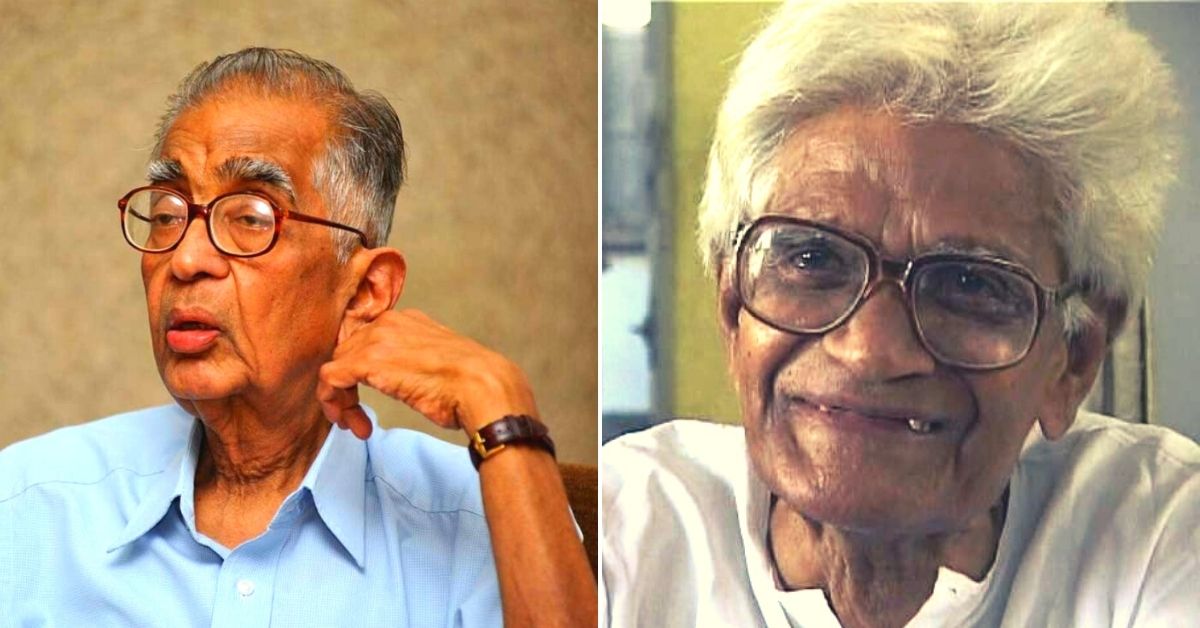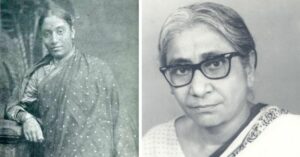The 2 Unsung Indian Scientists Who Laid The Foundation For 2020 Physics Nobel Prize
While it’s imperative to give the likes of Sir Roger Penrose his due props for the Physics Nobel Prize this year, it’s imperative to remember on whose shoulders his work stands. They are Indian scientists AK Raychaudhuri and CV Vishveshwara.

This year, the Nobel Prize in Physics was shared.
One half of it was awarded to legendary mathematical physicist Sir Roger Penrose “for the discovery that black hole formation is a robust prediction of the general theory of relativity”.
Meanwhile, the other half was jointly shared by Dr. Reinhard Genzel and Dr. Andrea Ghez “for the discovery of a supermassive compact object at the centre of our galaxy.”
Of particular focus here is the work of Nobel Prize winner Sir Roger Penrose. Indians must remember that some of the foundational work on black holes was done by Indian scientists AK Raychaudhuri and CV Vishveshwara, among others.
Given below is a brief description of Sir Penrose’s work:
“Prof Penrose, a British mathematical physicist based at the University of Oxford, won his share of the prize for using innovative mathematical techniques to prove that the formation of black holes is an inevitable consequence of Einstein’s general theory of relativity, and hence can truly exist…Among subsequent work, Penrose joined forces with Stephen Hawking, and produced new ideas on when gravitational singularities are formed – these are points of infinite density as found in the centre of black holes,” notes this report in The Guardian.
But none of this work is possible without the contribution of Raychaudhuri and Vishveshwara. Here’s how they contributed to not just Penrose’s success, but also enhance the world’s understanding of black holes.
Prof. Vishveshwara, the founding director of the Jawaharlal Nehru Planetarium in Bengaluru, where he established the now famous REAP (Research Education Advancement Programme in Physical Sciences) for undergraduate science students, made his mark in the study of black holes in the 1970s as a graduate student at the University of Maryland.
“As a graduate student at the University of Maryland, he published three ground-breaking single-author papers, which combined shaped our understanding of black holes. Stephen Hawking, Roger Penrose all came later in the picture,” says Dr. Karan Jani, who is associated with LIGO, in a conversation with IANS. His critical calculation was used in the “discovery of gravitational waves by LIGO (Laser Interferometer Gravitational Wave Observatory) detectors in 2015, from the merger of black holes,” the IANS report adds.
According to this obituary published in The Hindu, “he was among the first to study ‘black holes’ even before they had been so named. His calculations succeeded in giving a graphical form to the signal that would be emitted by two merging black holes – this was the waveform detected in 2015 by the LIGO collaboration, and contain the so-called ‘quasi normal modes’ – a ringdown stage that sounds like a bell’s ringing sound that is fading out.”
In fact, years later after his work as a graduate student, on 11 February 2016, LIGO invited him to the synchronised announcement of the first discovery of gravitational waves at IUCAA.
“The first picture shows a visibly emotional Vishu [as his friends called him] reacting to observational revelation of quasi-normal modes (now more popularly dubbed the ‘ring down’ signal) of black holes predicted by him long back as a graduate student in 1972,” said LIGO India, after they posted a photo of him reacting to the discovery he predicted all those years back. This was part of a larger tribute they paid after his demise on 16 January 2017.
Meanwhile, Raychaudhuri, although an extremely brilliant physicist and product of Kolkata’s legendary Presidency College, was less well known. However, what he did come up with is the famous Raychaudhuri Equation during his seminal research work in the 1950s, which is integral to our understanding of the formation of black holes.
“His equation demonstrates singularities are an inevitable consequence of general relativity – a key ingredient in the proofs of Penrose-Hawking singularity theorems. The #RaychaudhuriEquation upon which Penrose & Hawking’s proofs rely, is the basis for the existence of #BlackHole singularities and thus integral to the theory of formation of Black Holes,” tweets Prof Dibyendu Nandi, the Head and Coordinator of the Center of Excellence in Space Sciences India. The first major mention of the ‘Raychaudhuri Equation’ appeared in the 1965 paper by Stephen Hawking and George FR Ellis.
Five years later, both Sir Roger Penrose and Dr. Stephen Hawking referred to the equation in their work. According to Ghanashyam Date, a physicist at the Institute of Mathematical Sciences, Chennai, Raychaudhuri’s most important finding “embodies the physical intuition that the gravitational force is always attractive”.
In fact, as this report in The Wire notes, “The Raychaudhuri equation continues to be a key tool to investigate the behavior of blackhole horizons in modern physics. Further, the equation has its roots in simple geometry and not in Einstein’s theory of relativity. This means that Raychaudhuri’s insights will endure even should Einstein’s theory become replaced with a different or more advanced paradigm.”
That’s how foundational his work remains.
Therefore, while it’s imperative to give the likes of Sir Roger Penrose his due props for the Nobel Prize this year, it’s imperative to remember on whose shoulders his work stands. The beauty of scientific research is how researchers build upon the work of their predecessors. Without the legacy the likes of Raychaudhuri and Vishveshwara left behind, it’s hard to imagine that we would have come this far in our understanding of black holes.
(Edited by Vinayak Hegde)
Like this story? Or have something to share? Write to us: [email protected], or connect with us on Facebook and Twitter.
This story made me
- 97
- 121
- 89
- 167
Tell Us More
We bring stories straight from the heart of India, to inspire millions and create a wave of impact. Our positive movement is growing bigger everyday, and we would love for you to join it.
Please contribute whatever you can, every little penny helps our team in bringing you more stories that support dreams and spread hope.



















